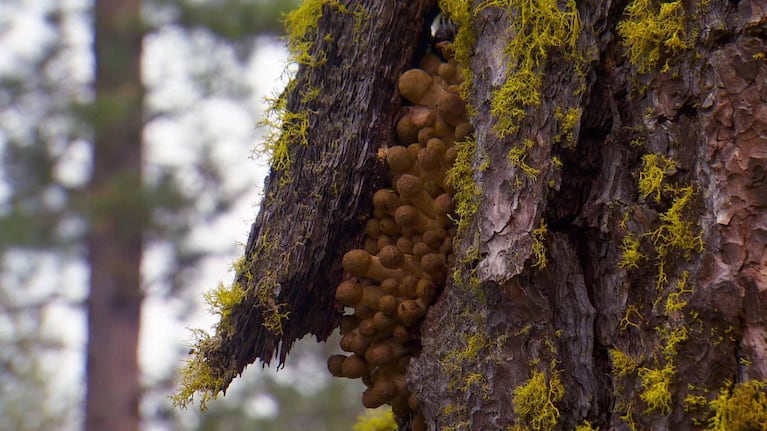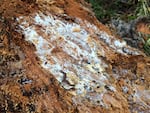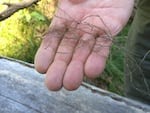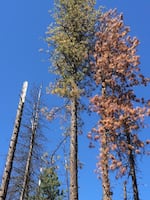Humongous Fungus
Scientists say the humongous fungus in eastern Oregon is the largest single living organism in the world.

1 of 12
When it fruits in the fall, the fungus can shove several layers of bark out of the way.
Nick Fisher / OPB

2 of 12
Certain types of trees die when infected with the fungus.
Todd Sonflieth / OPB

3 of 12
US Forest Service pathologist Greg Filip shows how the Armillaria fungus grows up the trunk under the bark of the tree.
Todd Sonflieth / OPB

4 of 12
The fungus grows under the bark of trees.
Vince Patton / OPB

5 of 12
For only a few weeks in the fall, the fungus grows visible fruit. It's from these golden caps where the honey mushroom gets its name.
Nick Fisher / OPB

6 of 12
Scientists say their DNA tests prove that a single Armillaria organism covers nearly 3 1/2 square miles under the Malheur National Forest.
Todd Sonflieth / OPB

7 of 12
The fungus takes the form of fibers when it travels underground from tree root to tree root, giving it an alternate nickname as the "shoestring fungus."
Vince Patton / OPB

8 of 12
Armillaria travels underground along the network of buried tree roots.
Aaron Drake Winterson

9 of 12
Dan Omdal, pathologist with the Washington Department of Natural Resources, points out a test plot of several kinds of trees planted around a stump known to have the deadly fungus.
Nick Fisher / OPB

10 of 12
Honey mushroom caps emerge in autumn.
Nick Fisher / OPB

11 of 12
Greg Whipple was the first person in the forest service to notice the fungus. In 1988 he estimated it covered 400 acres.
Todd Sonflieth / OPB

12 of 12
The Armillaria fungus killed trees on a piece of land owned by the Washington Department of Natural Resources.
Vince Patton / OPB